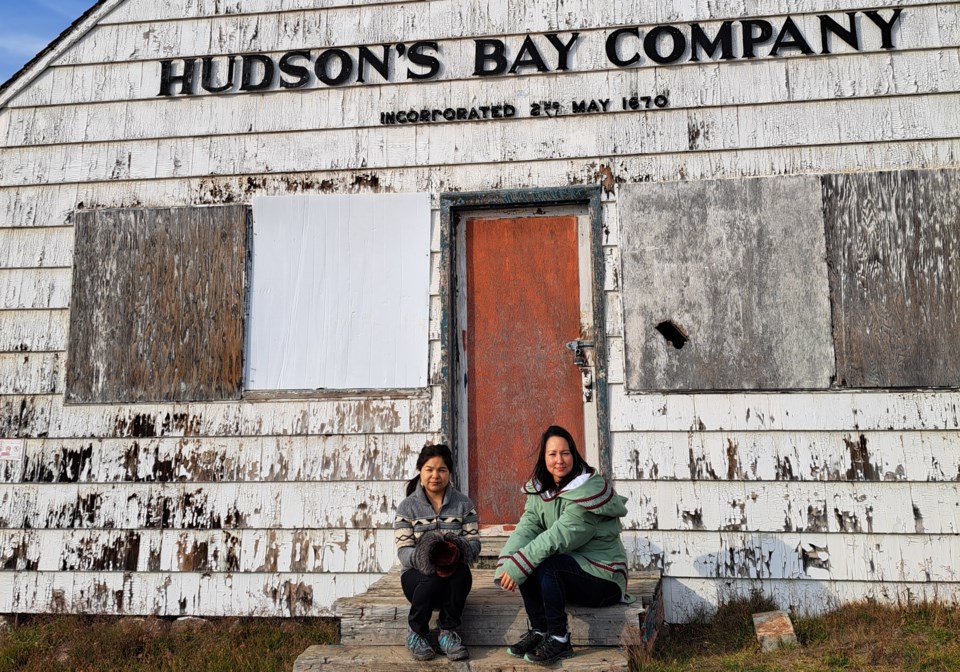Nov. 7 is International Inuit Day.
The truth is, some people aren’t aware that there is an Inuit Day. Some people aren’t even aware that Inuit don’t belong to First Nations people.
In honour of Inuit Day, I’d like to share a little more about Inuit and also how we as a people have done a lot for Canada. We deserve our day of celebration.
Though Inuit are not part of First Nations, it doesn’t mean that we weren’t in Canada first, it just means we are a different group of people and we call ourselves Inuit. We are the first people of the arctic tundra, but not of the boreal forested areas.
For those new to Canada, I want to share that Inuit, are the first people of the circumpolar region of the world which includes Canada, Russia, Greenland, Alaska. We as a people have been inhabiting Inuit Nunaat (Inuit northern traditional lands, water, and ice of the world) since time immemorial.
In Canada, we call our traditional lands Inuit Nunangat.
Before the creation of Canada, my ancestors went about their business, living off the land, trading with each other while honouring Sila (the translation to this word encompasses more than Mother Nature, it includes the Breath Spirit too.)
Inuit followed maligait (Inuit laws) that governed the protection of animals. These laws ensured that no animal herd was overhunted, that animals hunted didn’t suffer, and if, by chance, you pierced an animal but didn’t kill it, you were not allowed to stop hunting it unless it escaped your sight completely.
Additionally, we had to respect the animal’s peace, by not leaving hunted entrails in the path of the returning herd’s view. These laws enabled future generations to have access to food, and moreover it preserved harmony between humans and animals.
Inuit had encounters with European whalers before the arrival of the Hudson’s Bay Company. These relationships didn’t last, voyageurs and whalers went back home before the ice began to form, or they died from hypothermia and starvation. This changed when Europeans outfitted their ships to break through ice, and made trade relationships with Inuit. This is the beginning of the creation of Canada, rather Rupert’s Land, which was owned exclusively by the British-owned Hudson’s Bay Company (HBC).
Fur trade was the name of the game for the HBC. Inevitably, whaling, and hunting disrupted the harmony that existed between Inuit and animals. Herds thinned; bowhead whales were near extinction.
The skills of the Inuit hunters were exploited. Europeans from across the ocean benefited from the fur wares and whale oil.
Europeans and Canadians capitalized on whale oil for several reasons, which included its uses as fuel for lighting and for lubricating machinery.
If it weren’t for the whales preserved by Inuit maligait, the rest of the world would not have benefited as greatly from the Industrial Revolution. We have a lot of reasons to be thankful to the Inuit.
Once the Hudson’s Bay Company sold the land to Canada, the rich resources preserved by Inuit were the property of Canada. The HBC didn’t want to sell the land to the United States and Canada, at the time, was preoccupied with building infrastructure in the south.
In order to keep the land, the Canadian government now had the tumultuous job of continuously establishing Canadian sovereignty in the Arctic.
Southern Canadians were not as equipped to live in the harsh environment on the northernmost tips of the country.
The government decided that Inuit should relocate to the very high north to establish sovereignty during the time of the Cold War. This land was not part of the traditional habitat for Inuit to live on. It was too harsh, too cold, too dark and too desolate to support life. Inuit were forcibly relocated regardless.
Inuit, without consent, sacrificed and some starved to death while defending Canada’s sovereignty. A sacrifice that has benefited our entire country.
Inuit were relocated to two of the most northern parts of the country; Resolute Bay also always known by Inuit as Qausuittuq, the "place with no dawn" and Grise Fiord always known by Inuit as Aujuittuq "the place that never thaws."
Today, and everyday, Inuit all across the Arctic teach and train the army to survive and, alongside them, monitor the Canadian borders.
We are about to embark on International Inuit Day on Nov. 7. Year after year we celebrate this day.
There are hardly any honourable mentions in our southern lives on this day about Inuit. Therefore, I give you this article. We deserve our day of Celebration.
In the coming years, to celebrate this day you can invite an Inuit knowledge keeper or elder to host an Inuit craft, share in Inuit knowledge or invite the Inuit community to celebrate together with Inuit food. This should be done in every Canadian town.
I leave you with Maligait Inuit four laws:
- Work for the common good
- Respect all living things
- Preserve harmony and maintain balance
- Plan and prepare for the future
Happy Inuit Day
Muckpaloo Ipeelie lives in The Blue Mountains, Ontario. She is the founder and CEO of the Urban Inuit Identity Project through which she offers knowledge sharing and workshops. Learn more and find contact information at urbaninuitidentityproject.ca.



